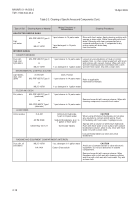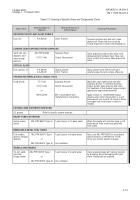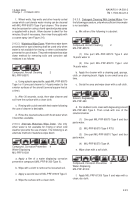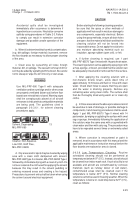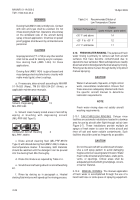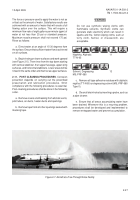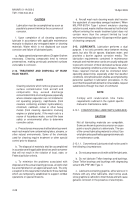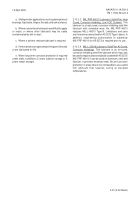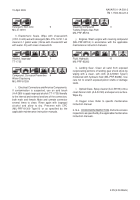TM-1-1500-344-23-2 - Page 52 of 240
2-28
NAVAIR 01-1A-509-2
TM 1-1500-344-23-2
15 April 2009
CAUTION
Lubrication must be accomplished as soon as
possible to prevent/minimize the occurrence of
corrosion.
f. Upon completion of all cleaning operations,
lubricate in accordance with applicable maintenance
manuals to displace any entrapped water or cleaning
materials. Water which is not displaced can cause
corrosion and failure of lubricated parts.
g. Apply operational preservatives (Chapter 8) when
necessary. Cleaning compounds tend to remove
preservatives, making previously protected surfaces
vulnerable to corrosion.
2-12.
TREATMENT AND DISPOSAL OF WASH
RACK WASTE.
NOTE
Cleaning solutions which remove greases and
surface contamination from aircraft and
components may exceed discharge
concentration limits on oil and grease (especially
where oil/water separators are not installed or
not operating properly), naphthalene (from
cleaners containing aromatic hydrocarbons),
chromium, cadmium, nickel or other heavy
metals (from cleaning operations involving
engines or plated parts). If the wash rack is a
source of hazardous waste, consult the base
safety or environmental office to determine
corrective action.
a. Precautionary measures shall be taken to prevent
wash rack waste from contaminating lakes, streams, or
other natural environments. Some of the chemicals
used for cleaning require treatment or other special
control prior to disposal.
b. The disposal of materials shall be accomplished
in accordance with applicable directives and in a manner
that will not result in the violation of local, state, or
Federal pollution criteria.
c. To mimimize the problems associated with
disposal and the actual cleaning process, all work shall
be accomplished on an approved wash rack. The only
exception to this requirement shall be for those facilities
which are temporarily established to support combat
operations or special missions.
d. Aircraft wash rack cleaning waste shall receive
the equivalent of secondary sewage treatment. When
MIL-PRF-85704 Type I solvent emulsion cleaning
solution is used, waste shall be released so that the total
effluent entering the waste treatment plant does not
contain more than the amount limited by local
environmental regulations or 100 parts per million (ppm)
of cleaning compound.
2-13.
LUBRICANTS.
Lubrication performs a dual
purpose. It not only prevents wear between moving
parts, but also fills air spaces, displaces water, and
provides a barrier against corrosive media. The
lubrication requirements contained in maintenance
manuals and maintenance cards are usually adequate
to prevent corrosion of most lubricated surfaces under
normal operating conditions at shore bases. However,
these required intervals shall be shortened when
operating aboard ship, especially under foul weather
conditions. Aircraft lubrication shall be accomplished by
personnel qualified in lubrication procedures. In the
event that the specified lubricant is not available, request
substitutions through the chain of command.
NOTE
Comply with relubrication time frame
requirements outlined in the system specific
manual or maintenance cards.
2-13.1. CONVENTIONAL LUBRICANTS (GREASES).
CAUTION
Not all lubricating materials are compatible.
Some are known to promote corrosion or cause
paint or acrylic plastics to deteriorate. The use
of the correct lubricating material is critical. Use
only lubricants specified by appropriate manuals
or maintenance cards.
2-13.1.1. Conventional Lubricants shall not be used in
the following circumstances:
a. Do not use greases or oils with solid film lubricants.
b. Do not lubricate Teflon bearings and bushings.
Clean Teflon bearings and bushings with degreasing
solvent MIL-PRF-680 Type II.
c. Lubricants containing graphite, either alone or in
mixture with any other lubricants, shall not be used,
since graphite is cathodic to most metals and will cause
galvanic corrosion in the presence of electrolytes.
Back to Top

